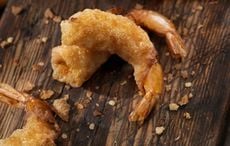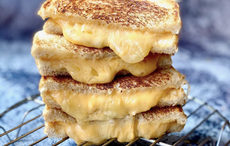This Wednesday is the day of the Epiphany, commonly known as Three Kings’ Day in the United States. It celebrates the three wise men’s visit to baby Jesus and also remembers his baptism, according to the Christian Bible’s events.
January 6, which is 12 days after Christmas in the Gregorian calendar, marks not only the end of the Christmas holidays but also the start of the Carnival season, which climaxes with Mardi Gras.
In some European countries, such as the Czech Republic and Slovakia, children dress as the three kings and visit houses. In their roles as the kings, or wise men, they sing about the Jesus’ birth and pay homage to the “king of kings”. They are rewarded with praise and cookies.
Dia de los Reyes Magos is the Latin American celebration of Epiphany. In many Latin American countries, it is the three wise men and not Santa Claus who bring gifts for children. Children write letters to the wise men telling them how good they were and what gifts they want. In France Le Jour des Rois (the Day of Kings), sometimes called the Fête des Rois, is celebrated with parties for children and adults. The gallete des rois, or “cake of kings”, highlights these celebrations. This cake is round and flat, cut into the pantry, covered with a white napkin and carried into a dining room.
Children in Spain fill their shoes with straw or grain for the three kings’ horses to eat and place them on balconies or by the front door on Epiphany Eve. The next day they find cookies, sweets or gifts in their place. The “three kings” make an entry in many cities in Spain on Epiphany Eve, accompanied by military bands and drummers in medieval dress.
In Ireland “Little Christmas” is also called Women's Christmas (Nollaig na mBan in Irish), and sometimes Women's Little Christmas. The tradition, still very strong in Cork is so called because of the Irish men taking on all the household duties for the day.
Most women hold parties or go out to celebrate the day with their friends, sisters, mothers, and aunts. Bars and restaurants serve mostly women and girls on this night. Children often buy presents for their mothers and grandmothers.
While originally a rural tradition, Women's Christmas is enjoying something of a revival, both in Ireland and abroad. It is becoming popular in the Irish-emigrant communities in Australia, Britain, New Zealand, and North America. For the Irish Women's Network of British Columbia, Canada, for example, this event is the highlight of the social calendar.
CAKE OF KINGS
The history of the King Cake began in 12th century France where the cake would be baked on the eve of January 6 to celebrate the visit to the Christ Child by the three Kings. A small token was hidden in the cake as a surprise for the finder.
But the origins go back a little further than that and as you would guess; it has something to do with the Catholic Church.
The King's Cake has its roots in pre-Christian religions of Western Europe. Part of the Harvest celebrations that the pagans practiced was the sacrifice ritual. It was customary to choose a man to be the "sacred king" of the tribe for a year. That man would be treated like a king for the year, then he would be sacrificed, and his blood returned to the soil to ensure that the harvest would be successful.
The method of choosing who would have the honor of being the sacred king was the purpose of the King's Cake. Several men of the tribe would eat of the cake, a coin or bean would be placed in the cake before baking, and whoever got the slice that had the coin was the chosen one.
When Christianity extended its influence and began overshadowing the religions that came before it, many of the local customs were not outright abolished, but instead were incorporated into Christian tradition and given a new spin. Catholic priests were not predisposed to human sacrifice, so the King's Cake was converted into a celebration of the Magi, the three Kings who came to visit the Christ Child.
French settlers brought the custom to Louisiana in the 18th century where it remained associated with the Epiphany until the 19th century when it became a more elaborate Mardi Gras custom. In New Orleans, the first cake of the season was served on January 6. A small ceramic figurine of a baby was hidden in the cake. Whoever found the baby was allowed to choose a mock court and host the next King Cake party the following week (weekly cake parties were held until Mardi Gras ).
In 1870, the Twelfth Night Revelers held their ball, with a large king cake as the main attraction. Instead of choosing a sacred king to be sacrificed, the Twelfth Night Revelers used the bean in the cake to choose the queen of the ball. This tradition has carried on to this day, although the Twelfth Night Revelers now use a wooden replica of a large king cake. The ladies of the court pull open little drawers in the cake's lower layer which contain the silver and gold beans. Silver means you're on the court; gold is for the queen.
King Cake
Ingredients
½ cup warm water (105 to 115 degrees)
2 packages dry yeast
2 teaspoons sugar
4 to 5 cups flour
½ cup sugar
2 teaspoons salt
1 teaspoon ground nutmeg
1 teaspoon grated lemon rind
½ cup warm milk (105 to 115 degrees)
½ cup melted unsalted butter, cooled
5 egg yolks
½ cup finely chopped candied citron
1 pecan half, uncooked dried bean or King Cake Baby
Glaze:
2 cups sifted powdered sugar
2 tablespoons lemon juice
2 tablespoons water
Purple, green and gold sugar crystals
Method:
Preheat the oven 350 degrees. Combine the warm water, yeast and 2 teaspoons sugar in a small bowl. Mix well and set aside to a warm place for about 10 minutes. Combine the 4 cups of flour, 1/2 cup sugar, salt, nutmeg, lemon rind and add warm milk, melted butter, egg yolks and yeast mixture. Beat until smooth. Turn dough out on a lightly floured surface. Knead in enough remaining flour until the dough is no longer sticky. Continue kneading until the dough is smooth and elastic (about 10 minutes). Place the dough in a well-greased bowl. Turn once so greased surface is on top.
Cover the dough and let rise in a warm place until doubled in bulk (about 1 1/2 hours). Punch the dough down and place on a lightly floured surface. Sprinkle with the citron and knead until the citron is evenly distributed. Shape the dough into a cylinder, about 30 inches long. Place the cylinder on a buttered baking sheet. Shape into a ring, pinching ends together to seal. Place a well-greased 2-pound coffee can or shortening can in the center of the ring to maintain shape during baking. Press the King Cake Baby, pecan half or dried bean into the ring from the bottom so that it is completely hidden by the dough. Cover the ring with a towel, and let rise in a warm place until doubled in bulk, about 45 minutes.
Bake for 30 minutes, or until golden brown. Remove the coffee can immediately. Allow the cake to cool. For the glaze: Combine the ingredients and beat until smooth. To assemble, drizzle cake with the glaze. Sprinkle with sugar crystals, alternating colors. Cut into the cake and hope you do not get the baby.
AND FINALLY …
Definition of a hangover:
Wrath of Grapes
Happy, healthy and prosperous New Year to all of our readers
CHEF GILLIGAN




Comments